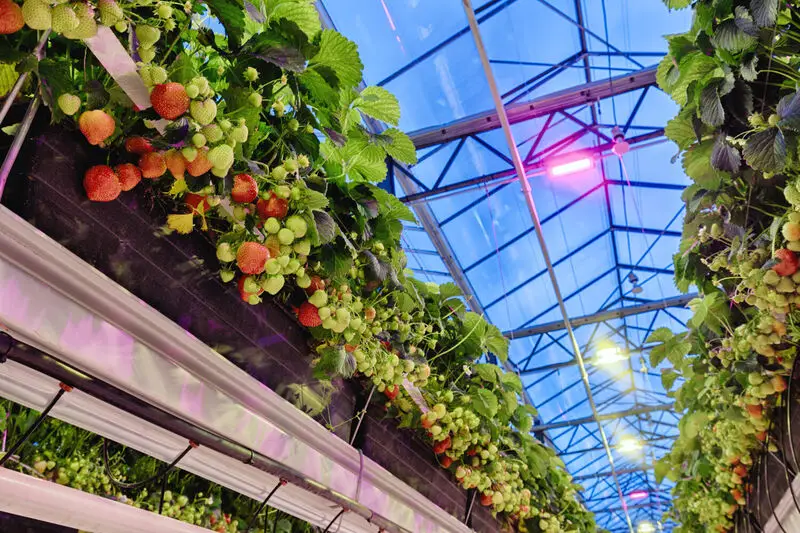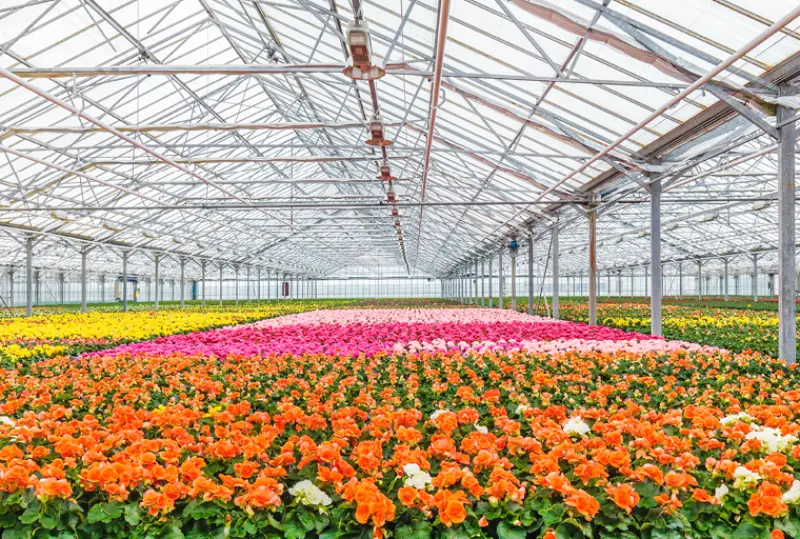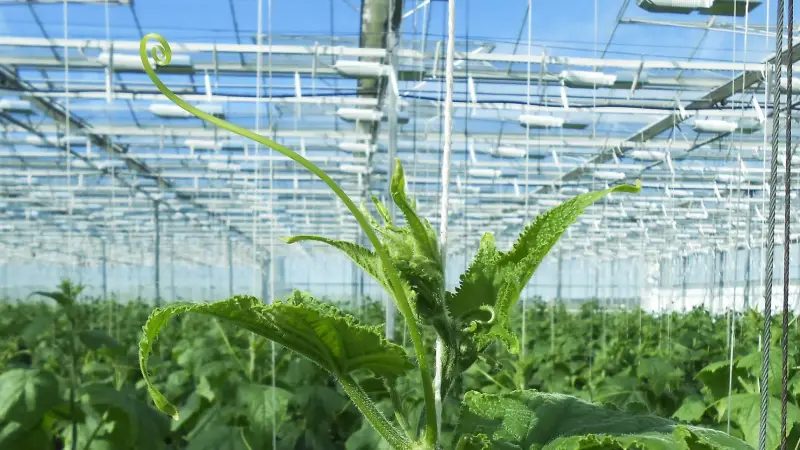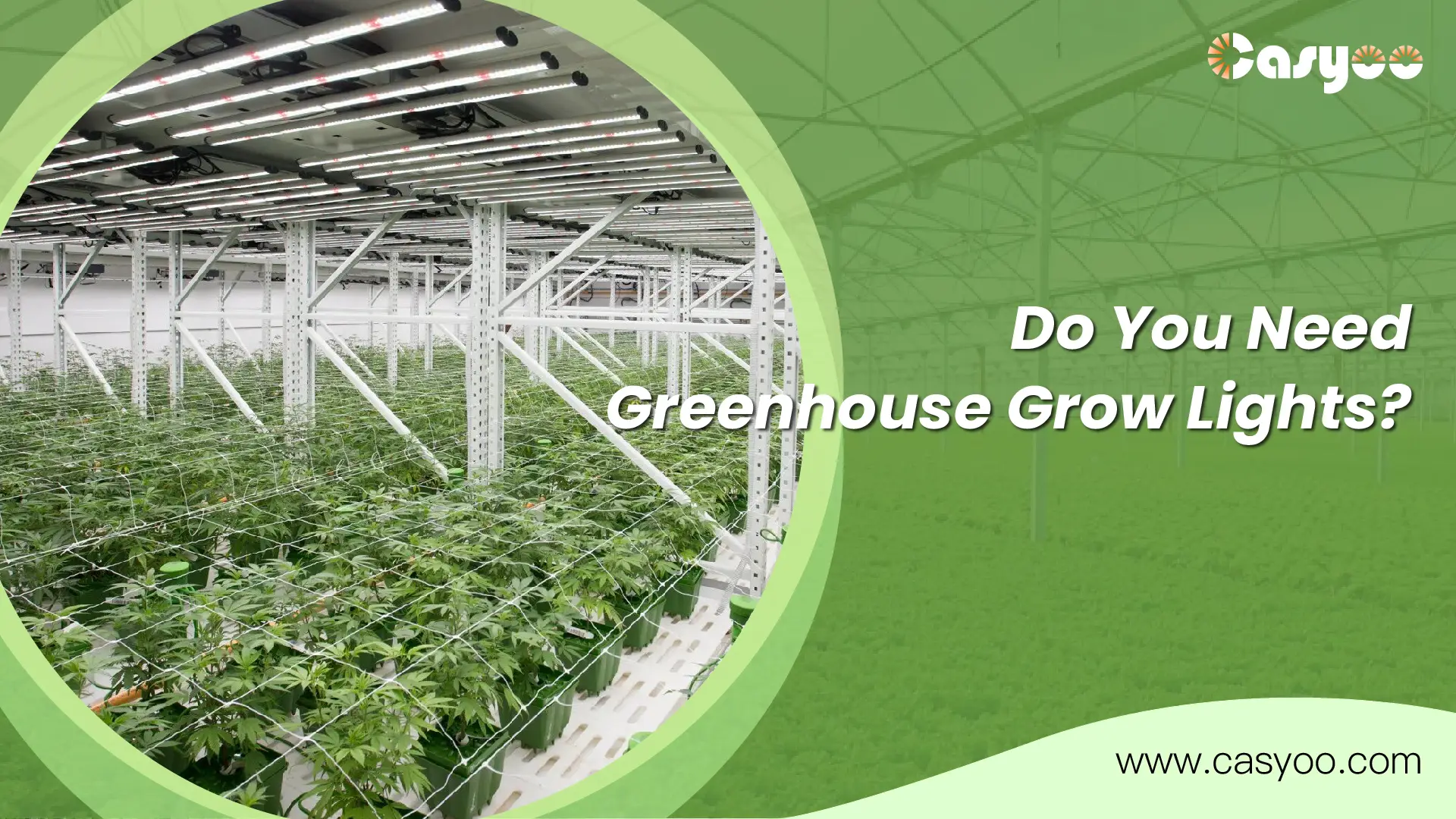Lighting is key to growing strong plants in greenhouses. Natural sunlight isn’t always enough – especially in areas with short daylight hours or on rainy days. This is where greenhouse grow lights came in! They mimic the spectrum of the sun, ensuring your crops, whether flowers, vegetables or fruits, receive consistent, optimal light during all growth stages.
In this guide, we’ll explore whether your greenhouse needs grow lights, the benefits of using greenhouse grow lights, and more.
Do you need grow lights for greenhouses?

Consider the following factors to evaluate whether you need a greenhouse grow light.
Location
If you live far from the equator or in areas with long winters, sunlight may be insufficient. You can check the DLI in your area. If the available DLI is less than the DLI required by the plant, then we need supplemental lighting.
Climate
On rainy or cloudy days, sunlight is less available, artificial light is a good choice.
Seasonal changes
In summer, the daylight hours are longer, so the natural light is sufficient to meet the needs of plant growth. However, in fall and winter, the daylight hours are shortened increasingly. By supplementing natural light with greenhouse grow lights, growers can ensure continuous crop production year-round.
Plant Type
Different plants have different light needs. Leafy greens and herbs, such as lettuce and basil, generally have lower light requirements and can flourish in moderate to low-light conditions. Root vegetables, such as carrots, also tolerate lower light levels, but increased light can promote root development and yield. Fruit crops such as tomatoes, peppers and cucumbers are light-demanding crops, they need high levels of light, especially during the flowering and fruiting stages.
What are the benefits of using greenhouse grow lights?

Speed up the harvest cycle
The faster your plants complete their growth cycle, the greater your overall yield and profits will be. If you rely entirely on natural sunlight for growing, you’re bound by the slow changes of the seasons. If you use HID bulbs, you can direct your plants to bloom by swapping out MD lights for HPS lights. However, the variable spectrum and intensity of quality LED lights allow you to create the most realistic natural seasonal changes. You can increase your plant’s yield faster than sunlight and more naturally than HID grow lights.
Extend sunlight hours without losing the sunrise/sunset effect
The sunrise/sunset environment is very important for greenhouse growth. When night falls, your plants switch from photosynthesis mode to metabolism mode. Just like humans, plants grow during nighttime hours, using the energy produced by photosynthesis during the day for root development and germination. The fading light of sunrise and the dim light of sunset give your crops a reminder that it’s time to begin transitioning from one process to another.
If you use HID grow lights to supplement sunlight, they can really help your plants thrive. However, HID lights typically have two settings: on or off. This means that your plant does not have the opportunity to transition gently from the photosynthetic process to another process. Instead, they are suddenly plunged into darkness, which may disrupt their growth activity.
LED grow lights come with a sunrise/sunset function, allowing you to start and end daylight hours at any time while providing gentle transitions for your crops.
Reduce operating costs
Lighting represents a large portion of any grower’s energy costs. LED grow lights save energy consumption and greatly reduce operating costs.
LED lights are more efficient than fluorescent bulbs and HSPs. Casyoo LED grow lights have an efficiency of up to 2.8 μmol/J. And, with the help of the variable spectrum function of LED grow lights, growers can dictate the exact intensity needed for each color, so you’re not wasting energy on wavelengths your plants can’t use.
The use of LEDs also allows growers to reduce cooling costs. They emit far less heat than traditional lights. Additionally, most areas in the U.S. offer rebates for growers who switch to LED lights.
Low maintenance cost
Maintaining a greenhouse consumes a lot of time and energy. No matter the size of your operation, your plants will undoubtedly keep you busy. The lifespan of LED lights is something between 50,000 and 100,000 hours. By comparison, a good HID bulb will only last a maximum of 24,000 hours, and even then, the lumens will degrade significantly in just 5,000 hours, so you’ll have to replace the bulb frequently. In this case, with LED grow lights, you don’t have to think about replacing your lights in 10-15 years.
How much light do greenhouse plants need?

Young plants require less light than older plants. You can use low levels of artificial light to start germination. However, plants require more light as they grow to produce more leaves, in part because younger leaves in the lower layers shadow older leaves. Increasing the light intensity during growth ensures that more light reaches older leaves.
As plants enter the flowering or fruiting stage, they consume less light. Crops in greenhouses may enter the flowering or fruiting stage during a time of year when the days are shortened and sunlight is less available.
Plants cannot receive too much light, but they can receive the heat from too much light. When the environment and temperature rise to the point where all the water the plant absorbs is used to cool the plant, the plant stops growing.
In addition to using some in-greenhouse cooling techniques such as fans, you can also cool your greenhouse by using appropriate shading. On the greenhouse roof, place a white or silver shade cloth, as lighter colors reflect heat. The black or green fabric absorbs heat and releases it onto the plants.
Lack of or too much light can be dangerous for greenhouse crops.
Not enough light
- The first sign of insufficient light is fallen leaves. Plants try to compensate for insufficient light by reducing leaf area.
- The lower leaves of the plant begin to turn yellow and dry.
- Slender stems with long internodes
Excessive light
- The leaves are bent and withered.
- Brown or gray spots appear on the leaves due to burns
Final thoughts
I believe that after reading this article, you already know whether you need greenhouse grow lights. Your best bet is to choose LED grow lights designed specifically for greenhouse gardening. We recommend Casyoo’s multi-bar grow lights. This series of lights features a slim profile that minimizes shadows and ensures your plants all get the light they need.




